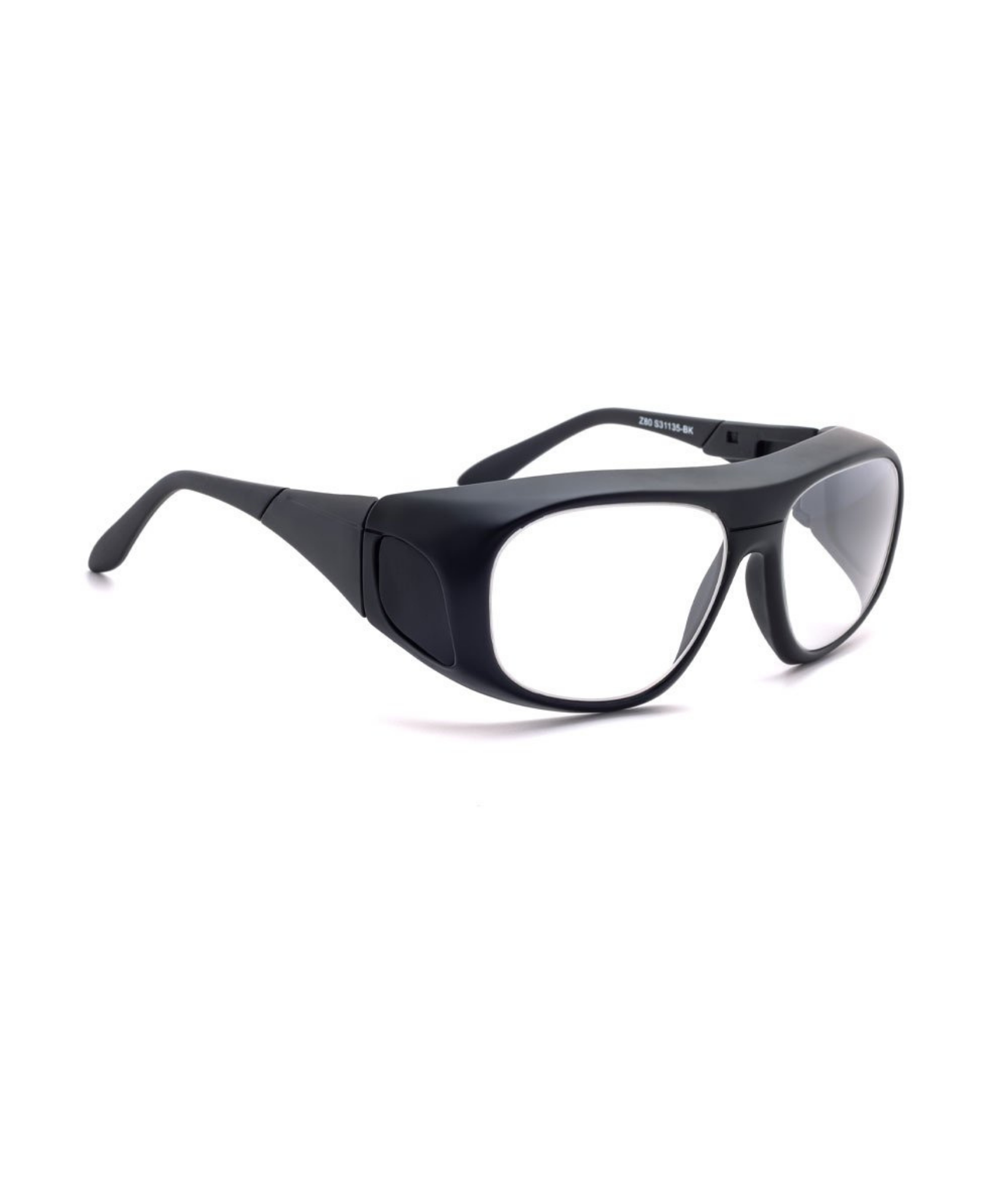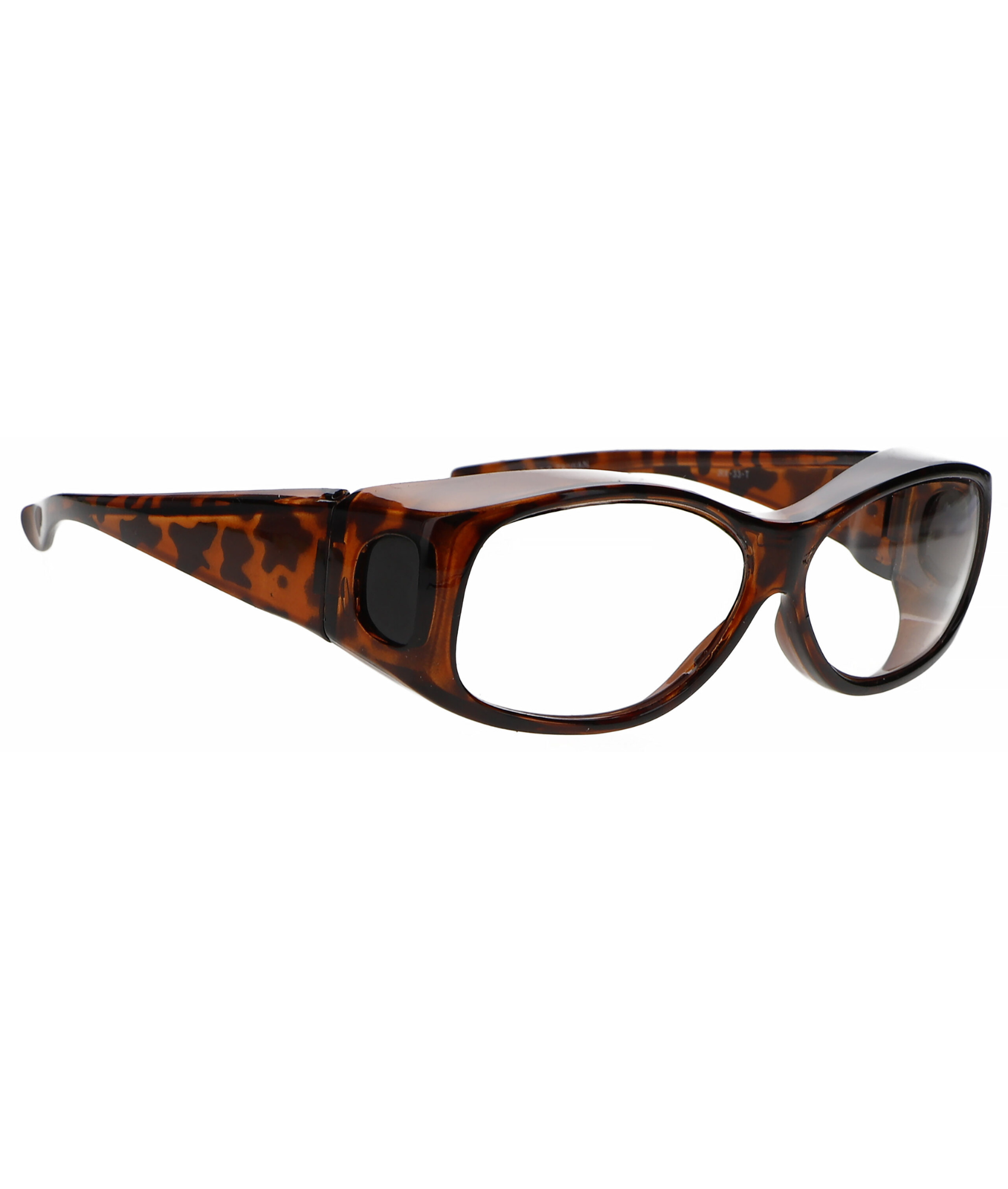Description
Why Wear Protective Lenses?
Dr Ziv Haskal, Professor of Radiology and Director of Vascular and Interventional Radiology, New York Presbyterian Hospital- Columbia University New York, issued this advice to fellow interventional radiologists at the SIR 2004 meeting. He presented a small study that suggests interventional radiologists are at risk for posterior subcapsular cataract formation and later talked to Interventional News.
Ziv Haskal explained to Interventional News how the study investigating posterior subcapsular (PSC) cataract formation in interventional radiologists, conducted in association with Basil Worgul, a professor of radiation biology in ophthalmology and radiology, and ophthalmologist Dr Anna Junk, came about.
“It was a serendipitous event,” said Haskal, “a colleague of mine had come to have his eyes looked at because of another medical issue with them and met Dr Basil Worgul, who is a world renown expert in radiation eye injury research, My colleague told me that he had been surprised to have been diagnosed with this (PSC cataract) by Dr Worgul.”
Dr Haskal’s colleague therefore advised him to get his eyes checked as well, “I went down to meet Basil Worgul, who it turns out is an ophthalmology researcher, but also has an appointment in the department of radiology in my own hospital. He had never heard of an interventional radiologist – like most people – so I talked to him about what we did and we created this study.”
Haskal, Worgul and Junk looked for an opportunity to conduct a small study in a timely fashion. This led them to choose to conduct the study during the AIMsymposium in New York. The equipment used by Worgul was a Nidek EAS1000 Scheimpflug and retroillumination camera. “He (Worgul) made peace with moving the unit to the downtown conference, which was kind enough to give us some booth space. Our target was to get 30 physicians with questionnaires and studies on site as a pilot study for a larger study, to try to at least define whether we were in fact an at risk population. We actually had 59 practicing interventional radiologists participate in a couple of days.”
According to Haskal, this was a feasibility study to define if there was something to study and, if there was, to give some sense of the size and shape further studies would need to be.
In the 59 interventional radiologists aged between 29 and 62 (median age 35), PSC cataracts were found in five participants and an additional 22 had evidence of PSC changes – opacities in the posterior area of the lens. One interventional radiologist had undergone cataract surgery before being screened in the study.
Case Study: The effectiveness of lead lenses in reducing
radiation exposure.
In a series of tests, optically ground prescription lenses of glass, leaded glass, and plastic were exposed to radiations that simulated routine angiography. Radiations transmitted through the lenses were measured. Results showed that plastic provided no protection, regular glass provided moderate protection and high lead content glass reduced radiation transmission by approximately 70%. The leaded glass that Imaging Solutions uses blocks 97% and up to 150kp.
Relatively high doses of radiation can damage the conjunctiva, iris, sciera and blood vessels of the retina. The lens of the eye, however, is the critical site, for it may sustain irreversible damage from a relatively low dose of radiation. Low doses will produce only a temporary reaction in the other ocular structures.
The sensitivity of the lens to radiation is felt to be due to the failure of normal cell replacement. The lens is surrounded by a capsule. On the anterior surface beneath this capsule is a layer of attended or cubold cells which comprise the epithellum of the lens and allow for normal metabolism of the lens. At the peripheral border or equator of the lens, these cells become progressively elongated and are transformed into the structure of the lens proper. Von Sallman demonstrated that cytologic damage from radiation to the lens consists of a temporary cessation of mitosis, cell death, and occasional abnormal mitosis produce bizarre cells. Because of the enveloping capsule of the lens, these damaged or bizarre cells can’t be sloughed but instead are pushed or migrate to the posterior pole of the lens’ where early radiation-induced cataract is first clinically manifest. Subsequent changes may also be observed in the anterior pole, with progressive opacification of the cortex eventually forming a mature and non-specific cataract.
Until now the only protective devices have been heavy cumbersome lead goggles. These are generally not used because of inconvenience and discomfort. Commercially available prescription lenses for ordinary glasses are made of either plastic or glass and therefore offer no or inadequate protection. There are two basic types of glass lenses, and these differ significantly in lead content. Ordinary glass lenses called “crown glass” are used by most people. A less common glass, known to opticians as “hi-lite”, happens to have relatively high lead content which allows for a thinner lens than would otherwise be required. It is normally used as a substitute for extremely thick lenses.
The below experiment was designed to determine if significant protection from radiation is provided by wearing high lead content glass instead of ordinary glass or plastic lenses.
“An age-related cataract, the thing we think about conventionally, is in the front of the lens,” explains Dr Ziv Haskal, Professor of Radiology and Director of Vascular and Interventional Radiology, New York Presbyterian Hospital-Columbia University New York. These happen in the back of the lens, a completely different area. Radiation is not the only thing that causes this, people can have PSC cataracts from diabetes, from steroids etc., which is why it is important to look for these co-factors and the need for a large enough population to eliminate these.”
Asked what the natural occurrence of PSC cataracts was, Haskal replied, “That’s the tricky thing!” The accepted level under which radiologists are told they have no risk of cataracts is 200 rads (or 2,000 milligray). However, this appears to be a false threshold, and it is more likely to be a continuous spectrum of dosing. According to Haskal, the results of this study “exceed the expected amount for both age of practitioner and what would be expected for a baseline finding. It is more than we expected to find, and that is why made this conclusion where it increased risk.”
On future studies, Haskal said, “We have broad ideas, although we do not have grant support yet. We have compiled a team of people with particular expertise around this, including some very well known expert epidermiologists. As a result of this feasibility study, one has agreed to join us in planning the next step. We have some summer research planned, as well to do better dosimetry for a practitioner. In other words, what people are actually getting exposed to at room time so we can do some better modelling of this.”































